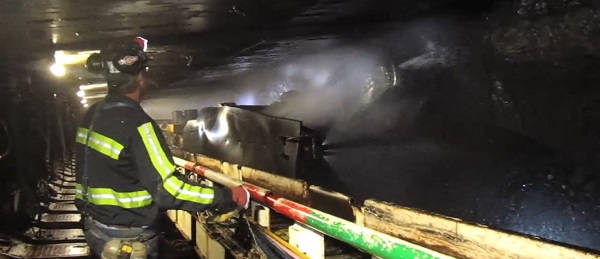Business
Trump, taunts and trade—Canada’s response is a decade out of date
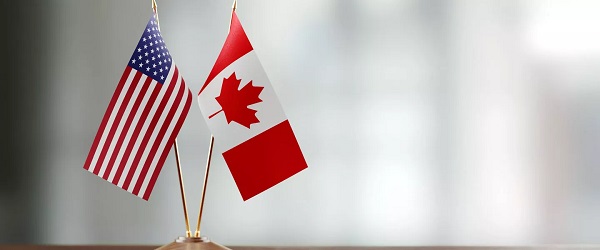
From the Fraser Institute
Canadian federal politicians are floundering in their responses to Donald Trump’s tariff and annexation threats. Unfortunately, they’re stuck in a 2016 mindset, still thinking Trump is a temporary aberration who should be disdained and ignored by the global community. But a lot has changed. Anyone wanting to understand Trump’s current priorities should spend less time looking at trade statistics and more time understanding the details of the lawfare campaigns against him. Canadian officials who had to look up who Kash Patel is, or who don’t know why Nathan Wade’s girlfriend finds herself in legal jeopardy, will find the next four years bewildering.
Three years ago, Trump was on the ropes. His first term had been derailed by phony accusations of Russian collusion and a Ukrainian quid pro quo. After 2020, the Biden Justice Department and numerous Democrat prosecutors devised implausible legal theories to launch multiple criminal cases against him and people who worked in his administration. In summer 2022, the FBI raided Mar-a-Lago and leaked to the press rumours of stolen nuclear codes and theft of government secrets. After Trump announced his candidacy in 2022, he was hit by wave after wave of indictments and civil suits strategically filed in deep blue districts. His legal bills soared while his lawyers past and present battled well-funded disbarment campaigns aimed at making it impossible for him to obtain counsel. He was assessed hundreds of millions of dollars in civil penalties and faced life in prison if convicted.
This would have broken many men. But when he was mug-shotted in Georgia on Aug. 24, 2023, his scowl signalled he was not giving in. In the 11 months from that day to his fist pump in Butler, Pennsylvania, Trump managed to defeat and discredit the lawfare attacks, assemble and lead a highly effective campaign team, knock Joe Biden off the Democratic ticket, run a series of near daily (and sometimes twice daily) rallies, win over top business leaders in Silicon Valley, open up a commanding lead in the polls and not only survive an assassination attempt but turn it into an image of triumph. On election day, he won the popular vote and carried the White House and both Houses of Congress.
It’s Trump’s world now, and Canadians should understand two things about it. First, he feels no loyalty to domestic and multilateral institutions that have governed the world for the past half century. Most of them opposed him last time and many were actively weaponized against him. In his mind, and in the thinking of his supporters, he didn’t just defeat the Democrats, he defeated the Republican establishment, most of Washington including the intelligence agencies, the entire corporate media, the courts, woke corporations, the United Nations and its derivatives, universities and academic authorities, and any foreign governments in league with the World Economic Forum. And it isn’t paranoia; they all had some role in trying to bring him down. Gaining credibility with the new Trump team will require showing how you have also fought against at least some of these groups.
Second, Trump has earned the right to govern in his own style, including saying whatever he wants. He’s a negotiator who likes trash-talking, so get used to it and learn to decode his messages.
When Trump first threatened tariffs, he linked it to two demands: stop the fentanyl going into the United States from Canada and meet our NATO spending targets. We should have done both long ago. In response, Trudeau should have launched an immediate national action plan on military readiness, border security and crackdowns on fentanyl labs. His failure to do so invited escalation. Which, luckily, only consisted of taunts about annexation. Rather than getting whiny and defensive, the best response (in addition to dealing with the border and defence issues) would have been to troll back by saying that Canada would fight any attempt to bring our people under the jurisdiction of the corrupt U.S. Department of Justice, and we will never form a union with a country that refuses to require every state to mandate photo I.D. to vote and has so many election problems as a result.
As to Trump’s complaints about the U.S. trade deficit with Canada, this is a made-in-Washington problem. The U.S. currently imports $4 trillion in goods and services from the rest of the world but only sells $3 trillion back in exports. Trump looks at that and says we’re ripping them off. But that trillion-dollar difference shows up in the U.S. National Income and Product Accounts as the capital account balance. The rest of the world buys that much in U.S. financial instruments each year, including treasury bills that keep Washington functioning. The U.S. savings rate is not high enough to cover the federal government deficit and all the other domestic borrowing needs. So the Americans look to other countries to cover the difference. Canada’s persistent trade surplus with the U.S. ($108 billion in 2023) partly funds that need. Money that goes to buying financial instruments can’t be spent on goods and services.
So the other response to the annexation taunts should be to remind Trump that all the tariffs in the world won’t shrink the trade deficit as long as Congress needs to borrow so much money each year. Eliminate the budget deficit and the trade deficit will disappear, too. And then there will be less money in D.C. to fund lawfare and corruption. Win-win.
2025 Federal Election
The “Hardhat Vote” Has Embraced Pierre Poilievre
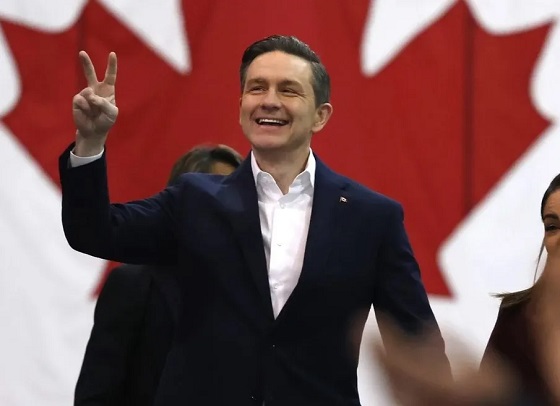
 David Krayden
David Krayden
Blue collar and unionized workers are supporting Pierre Poilievre and the CPC
When President Richard Nixon won a landslide in his 1972 reelection, he did so by broadening his own personal popularity and the appeal of the Republican Party to blue collar and unionized workers. It was called the hardhat vote and many working people embraced Nixon because he seemed to be talking the same language as they were. Nixon talked about law and order and getting tough on crime; safer streets and harsher penalties for serious crime. Although unionized workers had traditionally voted for the Democratic Party and seen the Republicans as the party of the wealthy, by 1972 the Democrats had moved far to the left on social issues and were completely out of touch with average Americans who saw Democratic presidential nominee Sen. George McGovern as being soft on crime and approving of the anarchy on the streets.
It’s precisely the language that Conservative Party of Canada leader Pierre Poilievere is speaking in the 2025 federal election. As support for the New Democratic Party has collapsed throughout the election campaign, don’t think most of it is going to the Liberal Party. Poilievre has been targeting blue collar workers for years with his emphasis on the trades and talking about middle class tax cuts and safe streets. A factory or construction worker is middle class and just want an affordable lifestyle for their families. They don’t have a lot of time for the woke underbelly of the Liberals or the NDP and are increasingly reluctant to support either party because both have appealed to elites.
Listen to Karl Lovett, the president of the Local 773 of the International Brotherhood of Electrical Workers, talk about Carney corruption and why he is supporting Poilievre and the CPC in 2025.
“Mark Carney also failed to pay $5 billion in Canadian taxes by hiding his company’s assets in Bermuda above a bike shop. Hard to believe that information comes from Canada’s NDP, or at least who is left of them, because the irony is, Mark Carney has eaten all those people alive. Even the mayor of Lima has warned Canadians not to vote for Mark Carney, and why for ripping him off the poorest of the poor people in Peru. That’s who he ripped off,” Lovett said.
“Listen, there are countless other outrageous examples proving that Mark Carney doesn’t give a damn about the Canadian working man. And now, as prime minister, which he’s not, Carney is promising to put carbon tax and tariff on the auto industry. It’s another rip-off screen that’s right. We’re getting punched by Trump on one side of the border, and Carney plans to punch us on this side of the border, also pretending it’s all about climate change, and now he’s made millions off the workers’ backs. He wants more than money. He wants more power. He wants all of the power to do whatever he wants to do. Mark Carney cannot be trusted with this power. Mark Carney cannot be trusted to protect workers,” Lovett continued.
The union leader told a cheering crowd that “Mark Carney is in it for himself, and when he loses this election, you can bet Mark Carney is going to leave Canada in a New York minute. But there’s hope, there’s hope, there’s our last hope. His name is Pierre Poilievere – the .only hope for Canadian workers. You see Mark Carney fooled Justin Trudeau. We can’t let him keep fooling us.”
“Local 773, which I represent, knows Pierre Poilievre very well. We can proudly tell you that Pierre has our back. Pierre has been putting Canadian people to work and Canadian workers. First, local 773 began working with Pierre Poilievre, the Conservative Member of Parliament Chris Lewis, some years ago, when it became all too clear that the Liberal Party had zero interest in helping out workers. Upon winning the leadership of the party, Pierre made Local 773 his very first priority, he came to my union hall. Pier made the Local 773 Visitor Training Center, and he met all our workers, and he made a pledge to me; he’s not going to turn his back on us, and I believe him,” Lovett said.
Toronto Sun columnist Joe Warmington agreed with me and you can hear that entire interview, below. “Labor wants to work, and they want to, you know, build things, and they want those good, paying jobs, and that’s what Poilievre has always been about, you know.”
“He wants more power. He wants all of the power to do whatever he wants to do. Mark Carney cannot be trusted with this power. Mark Carney cannot be trusted to protect workers,”
“Again, it’s hard to know, but I always felt … and I still think that Poilievre is going to pull this off because of these reasons that you’ve raised today, I never really bought into and again, I’m just one person’s opinion, and I go on the ground. In the air, the polls are saying, I know there’s this main street poll today, maybe it’ll swing differently. But in the air, it says one thing, and on the ground, it says another thing. And that clip you just showed, that’s the ground, that’s where the workers are, that’s where the families are.”
2025 Federal Election
Poilievre will cancel Mark Carney’s new Liberal packaging law and scrap the Liberal plastic ban!

From Conservative Party Communications
Conservative Leader Pierre Poilievre promised today that a new Conservative government will stop Mark Carney’s proposed Liberal food tax and scrap the existing Liberal plastic ban. Poilievre will:
- Stop proposed new labelling and packaging requirements that will raise the cost of fresh produce by as much as 34% and cost the average Canadian household an additional $400 each year.
- Scrap the Liberal plastics ban, including the ban on straws, grocery bags, food containers and cutlery, and other single-use plastics, letting consumers and businesses choose what works for them.
- Protect restaurants, grocers, and low-income Canadians from one-size-fits-all packaging rules that disproportionately affect those who can least afford it.
“After the Lost Liberal Decade, many Canadians can barely afford to put food on the table. And now Mark Carney and the Liberals want to make it even harder with a new food packaging law that will raise the price of food–again,” said Poilievre. “A new Conservative government will keep food prices down by scrapping the Liberal plastic ban and stopping Carney’s new Liberal food tax.”
After a decade of out-of-control spending and massive tax increases, families are spending $800 more on food this year than they did in 2024, and food banks had to handle a record two million visits in a single month. In Montreal, 44 percent of CEGEP students are experiencing some form of food insecurity, while places like Hawkesbury, Kingston, Toronto and Mississauga have all declared food insecurity emergencies.
And food prices are still rocketing upwards, surging by 3.2% over the last year, with no end in sight. In the last month alone, food inflation increased by 1.9 percentage points—the largest monthly jump in food prices in decades.
As if this wasn’t bad enough, Liberals have made life even more expensive and inconvenient for Canadians by banning plastics – including everything from straws to bags to food packaging. The current Liberal ban on single-use plastics will cost Canadians $1.3 billion dollars over the next decade.

Now Mark Carney wants to make it worse by adding complicated and costly new food packaging rules that will drive up the price of food even more–in effect, a new Liberal food tax. Plastic food packaging makes up 1/3 of all plastic packaging in Canada. The proposed Liberal food tax will cost the average Canadian household an additional $400 each year, waste half a million tonnes of food, decrease access to imported fruit and produce, and increase food inflation. The Chemistry Industry Association of Canada has also warned that this tax will put up to 60,000 Canadians out of work.
“The Liberals’ ideological crusade against convenience has already driven up food prices and the last thing Canadians need is Mark Carney’s new food tax added directly to your grocery bill,” said Poilievre. “The choice for Canadians is clear, a fourth Liberal term that will make food even more expensive or a new Conservative government that will axe the food tax and bring back straws, grocery bags and other items, to make life more affordable and convenient for Canadians – For a Change.”
-
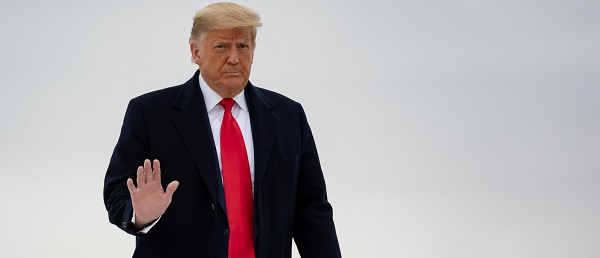
 Energy2 days ago
Energy2 days ago‘War On Coal Is Finally Over’: Energy Experts Say Trump Admin’s Deregulation Agenda Could Fuel Coal’s ‘Revival’
-
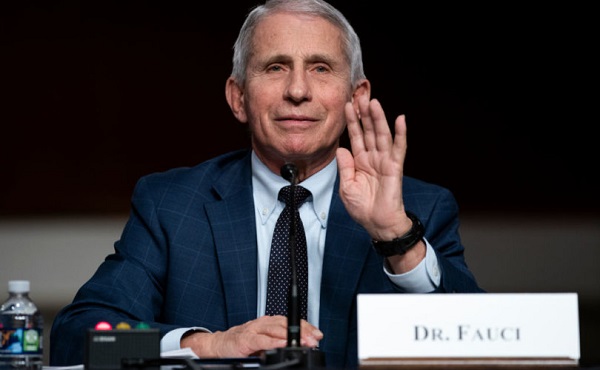
 COVID-192 days ago
COVID-192 days agoThe Pandemic Justice Phase Begins as Criminal Investigations Commence
-

 Economy1 day ago
Economy1 day agoThe Net-Zero Dream Is Unravelling And The Consequences Are Global
-

 2025 Federal Election2 days ago
2025 Federal Election2 days agoBefore the Vote: Ask Who’s Defending Our Health
-

 2025 Federal Election1 day ago
2025 Federal Election1 day agoHomebuilding in Canada stalls despite population explosion
-

 2025 Federal Election2 days ago
2025 Federal Election2 days agoThe “Hardhat Vote” Has Embraced Pierre Poilievre
-

 2025 Federal Election14 hours ago
2025 Federal Election14 hours agoCarney’s Fiscal Fantasy: When the Economist Becomes More Dangerous Than the Drama Teacher
-

 Addictions1 day ago
Addictions1 day agoAddiction experts demand witnessed dosing guidelines after pharmacy scam exposed










